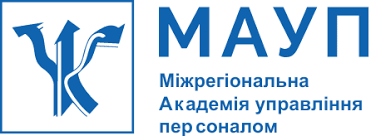TECHNOLOGIES FOR BUSINESS COMMUNICATION ANALYSIS AS A TOOL FOR IMPROVING PERFORMANCE INDICATORS IN THE DIGITAL ECONOMY SYSTEM OF BANKING SERVICE INSTITUTIONS
DOI:
https://doi.org/10.32689/2523-4536/79-4Keywords:
digital economy, systems analysis, artificial intelligence, natural language processing, language analytics, unit economics, end-to-end analytics, online banking, managerial accountingAbstract
The article presents the results of an applied study aimed at implementing language analytics into the infrastructure of banking institutions through the development and testing of a multi-module agent-based system built on artificial intelligence technologies, particularly large language models. The study outlines key performance indicators and analyzes the specifics of their integration into the analytical infrastructure of the digital economy within the banking sector. Based on artificial intelligence tools for language analytics, innovative forms of analytical reporting have been developed, adapted to the specifics of management accounting in banking institutions. Within the framework of a systems approach to the development of the digital economy, the feasibility of applying a comprehensive analytical toolkit that integrates the principles of unit economics, end-to-end analytics, and modern technologies for automated communication analysis based on large language models into the information-analytical systems of banks has been substantiated. The applicability of a multi-module agent-based system based on large language models, which has previously demonstrated high effectiveness in other economic sectors, has been justified for the analysis of communications between clients and representatives of banking institutions. Unlike the traditional approach that employs a single unified prompt for all types of customer inquiries, the proposed architecture provides for the functional differentiation of analytical tasks among specialized agents, each performing a distinct cognitive-analytical function. This modular structure ensures higher processing accuracy, greater relevance of the results obtained, and the ability to adapt the system to the specific managerial needs of the banking sector. The study has also identified optimal conditions for the application of large language models depending on the typology of analytical tasks; in particular, the use of GPT and BERT models has been found to be most appropriate for communication analysis in the banking domain.
References
Brynjolfsson E., McAfee A. The Second Machine Age: Work, Progress, and Prosperity in a Time of Brilliant Technologies. Journal of Economic Perspectives. 2014. 28(2). P. 3–28.
Turing A. M. Computing Machinery and Intelligence. Mind. 1950. Vol. 59. № 236. P. 433–460.
Fleischer M. Speech analytics: Turning call-centre voice of the customer into business intelligence. International Journal of Market Research. 2007. Vol. 49. № 2. P. 1–3.
Das S.R. Text and Context: Language Analytics in Finance, Foundations and Trends in Finance. 2014. Vol. 3. P. 145–261.
Lopez-Lira A. Bridging Language Models and Financial Analysis. Quantitative Finance. 2025. Vol. 12(1). P. 1–28.
Chu H., Zhan X. The Impact of Digital Banking Services on Customer Satisfaction. Frontiers in Business, Economics and Management. 2025. Vol. 15(3). P. 356–367.
Shah S., Sharma R. Unit Economics as a Driver of Digital Business Scalability: Evidence from Financial Services Sector. Journal of Digital Business and Finance. 2023. Vol. 7(2). P. 125–138.
Ozili P.K. Economic Research in Banking – A Survey. Strategic Resilience, Cyber Security and Risk Management (Contemporary Studies in Economic and Financial Analysis, Vol. 111B). Leeds: Emerald Publishing. 2023. P. 217–226.
Lemon K.N., Verhoef P.C. Understanding customer experience throughout the customer journey. Journal of Marketing. 2016. Vol. 80(6). P.69–96.
Jurafsky D., Martin J.H. Challenges and Advances in Automatic Speech Recognition for Financial Services. IEEE Transactions on Audio, Speech, and Language Processing. 2023. Vol. 31. P. 1125–1140.









